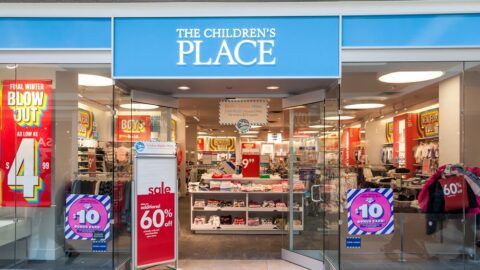‘Tis the season for retail earnings, and so far, pre-holiday numbers are varying dramatically from company to company. Amazon kicked things off with its first quarterly net income drop (26% to $2.1 billion) since 2017, largely related to the company’s $800 million investment in improving its one-day delivery capabilities. The volatility has continued with reports from a range of retailers, including Alibaba, Walgreens, Tapestry and Wayfair.
At one end of the spectrum, Alibaba once again achieved a highly promising Q3 ahead of its biggest shopping event. On the other, Walgreens had a stunningly poor quarter even after the company revealed in August that it was closing 400 stores. Weak sales from the Kate Spade division of Tapestry have affected the entire company’s Q3, and Wayfair is struggling with high operating and customer acquisition costs that are raising doubts about its continued viability.
Looking at the overall retail industry, Moody’s has cut its sales and operating profit growth outlook for the year, even though the firm is projecting healthy holiday season sales growth in the 4% to 4.5% range.
Advertisement
Alibaba Buoyed By Cloud Computing, Expanded Singles Day
Despite the continued concerns related to the trade war between U.S. and China, Alibaba is still growing at a rapid pace, with net income increasing during Q3 by 36% on $16.65 billion in revenue. Total “core commerce” retail revenue for Alibaba amounted to $14.2 billion, a 40% increase over last year. The Chinese e-Commerce giant is seeing significant growth from its cloud computing platform, which generated $1.3 billion, up 64% year-over-year, driven by an increase in average spending per customer.
These results are great news for Alibaba as the company prepares to host its “11.11 Global Shopping Festival,” colloquially known as Singles Day. While the official shopping day used to occur exclusively on Nov. 11, this year Alibaba actually started promotional efforts nearly three weeks earlier, kicking off on Oct. 21.
While Alibaba shared positive news across the board, Walgreens saw profits slide 55% as it spent more to shutter unprofitable locations and lay off employees. The drugstore chain increased the volume of its cost-cutting plan, now aiming to cut more than $1.8 billion in spending by fiscal year 2022, up from the previously announced $1.5 billion.
Comparable sales in Walgreens’ U.S. retail pharmacy business increased 2.1% to $26 billion, with pharmacy sales driving the bulk of the increase. Conversely, comparable store sales of nonpharmacy products declined 1.2%, with Walgreensattributing the decline “entirely” to its de-emphasis of tobacco products. Walgreens raised its minimum tobacco buying age to 21 in the spring, and announced earlier this month it would stop selling e-cigarettes amid health concerns related to the products.
Overall, Moody’s expects operating profits for all drug stores to fall approximately 2% in 2019, versus growth of 5.4% in 2018.
Wayfair May Have A Long-Term Viability Problem
One of the most alarming set of quarterly results thus far came from Wayfair, which despite beating revenue expectations saw a $181.9 million net loss in Q3, more than doubling the $100.7 million loss in the year-ago period. “For every order placed, the company is making a loss of $19.71,” wrote Neil Saunders, Managing Director of GlobalData Retail in a research note. “In our view, this is far from sustainable and raises questions about the long-term viability of the business.”
To make matters worse, customer acquisition costs have been extremely high for the furniture seller (advertising spend for the quarter was $282 million), yet its revenue has begun to stagnate. While direct retail net revenue, which consists of sales generated through the company’s e-Commerce sites, rose 42.1% year-over-year to $2.3 billion, annual revenue growth is predicted to dip from 43.6% in 2018 to 33% in 2019.
Poor Sales At Kate Spade Hold Back Tapestry Brand
Tapestry, the luxury fashion house comprised of Coach, Stuart Weitzman and Kate Spade, saw net income sink from $122.3 million to $20 million (excluding $76 million in charges related to a change in how it accounts for store leases) during the quarter. While the earnings numbers actually beat Wall Street analyst estimates, net sales dipped slightly, from $1.38 billion a year ago to $1.36 billion.
One major culprit causing the dip: poor numbers from Kate Spade. During the quarter, global same-store sales at Kate Spade dropped 16%, while they increased 1% at Coach.
Tapestry Chairman and CEO Jide Zeitlin, who replaced Victor Luis as chief exec in September, noted when he took on the role that the fashion house’s “top priority remains driving significantly improved performance at our acquired brands.” Kate Spade generated revenue of $306 million in the quarter, but Zeitlin has expressed confidence that the business can drive annual sales north of $2 billion.
Moody’s Cuts 2019 Sales, Operating Profit Growth Outlook
The recent ups and downs may be reflected in overall retail results for the remainder of the year, according to a research report from Moody’s. The financial services company has changed its 2019 full-year outlook from “positive” to “stable,” cutting 2019 operating profit growth to a slower 2% to 3% rather than the expected 5% to 6%, following a very strong 4.9% growth rate for 2018. Additionally, Moody’s downgraded sales growth forecasts for the year from initial projections of 4.5% to 5.5% to a range between 3.5% to 4.5%.
“Large retail contributors such as drug stores and home improvement stores have been negatively impacted this year by reimbursement pressures and softer housing markets,” said Mickey Chadha, VP and Senior Credit Officer at Moody’s Investors Service in commentary provided to Retail TouchPoints. “Meanwhile, retailers are facing intense pricing pressures in the fight for market share, as well as rising costs due to continued investments in e-Commerce capabilities and rising labor costs, putting pressure on margins and weighing on overall profitability.”
Despite the full-year outlook cuts, Moody’s anticipates retail sales during the 2019 holiday season will improve on last year, with 4.0% to 4.5% sales growth compared to 3.5% for 2018. The report highlights consumer spending that is benefiting from a healthy U.S. economy, consumer confidence and increasing wage growth.
Q3 Earning Season Kicks Off: Alibaba Excels, Walgreens And Wayfair Stumble









